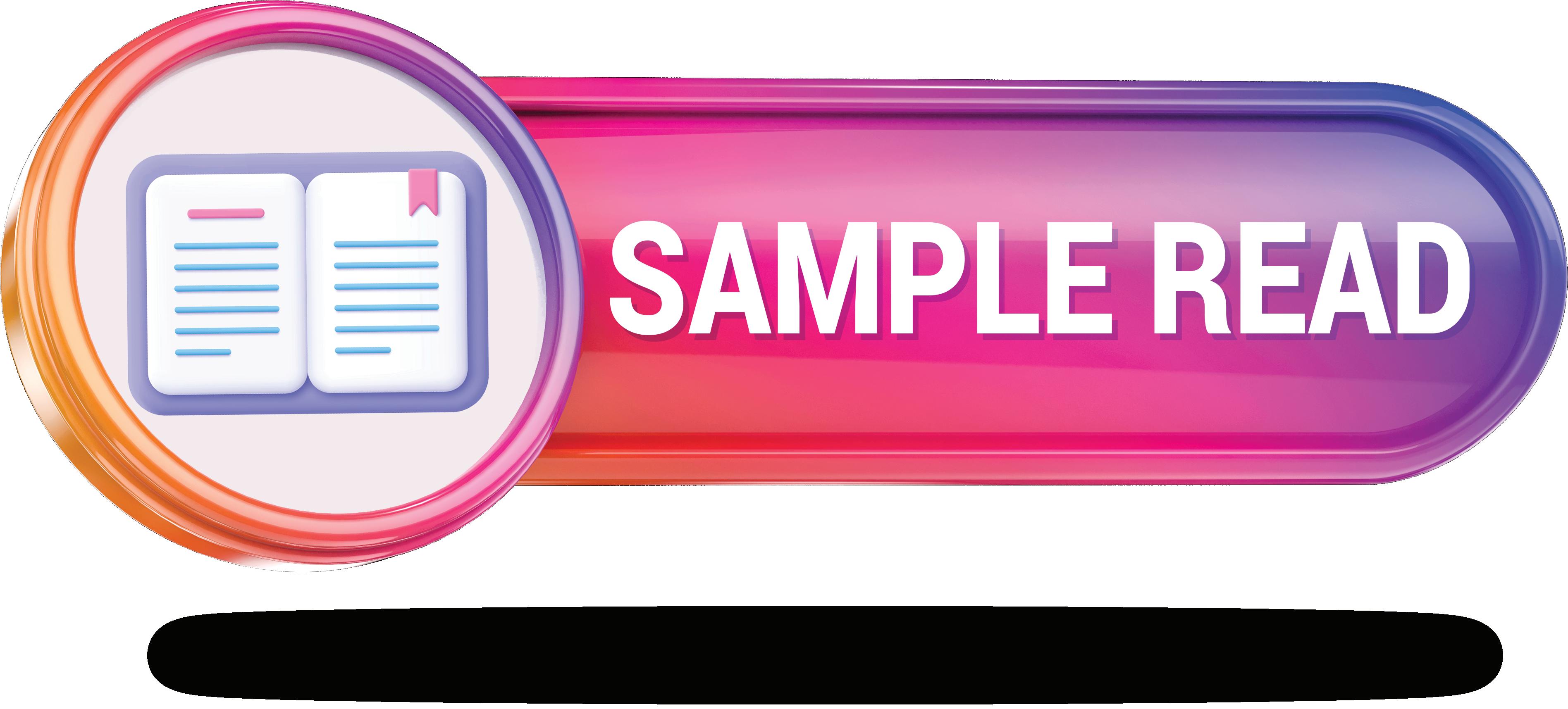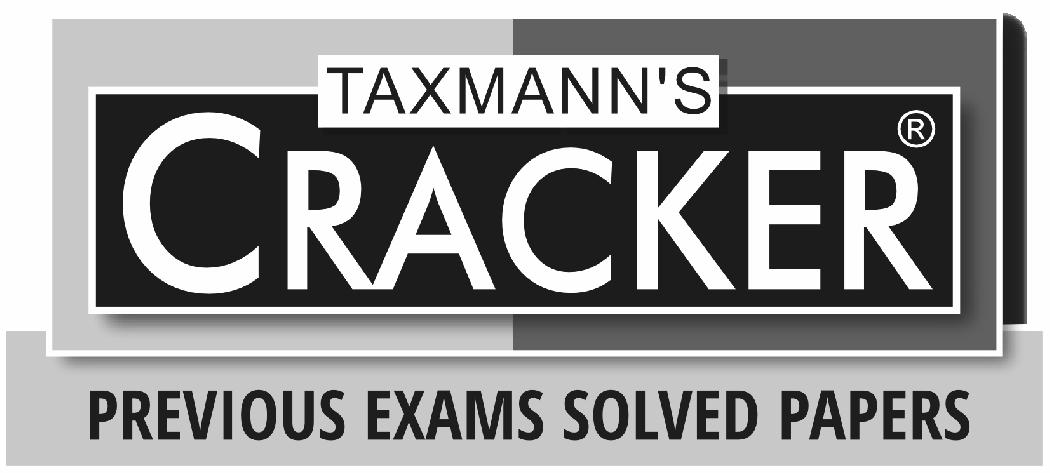E-GOVERNANCE AND MCA-21
E-GOVERNANCE & MCA-21
1. Write a short note on: SMART Governance [Dec. 2008 (4 Marks)]
Ans.:
(1) Introduction: MCA-21 stands for e-governance initiative of Ministry of Corporate Affairs (MCA) of the 21st Century. It is based on the Government’s vision of National e-governance in the country.
(2) E-governance: E-governance or Electronic Governance is the application of Information Technology to the Government functioning in order to bring about Simple, Moral, Accountable, Responsive & Transparent (SMART) Governance.
(3) Objects: Project MCA-21 aims at moving from paper based to nearly paperless environment. The project serves the interest of all the key stake holders and the public at large. Also professionals need no longer to visit the officers of ROC and are able to interact with the Ministry using MCA21 portal from their offices or home.
(4) Services of MCA: The services of the MCA with the introduction of MCA-21 will be e-Form driven. Form filing will be done using freely downloadable software and it can be done offline.
(5) Major Components: The major components involved in this comprehensive e-governance project are front office and back office.
(a) Front Office: The Front Office represents the interface of the corporate with the MCA-21 system. This comprises of Virtual Front Office (VFO) and Registrar’s Front Office (RFO).
(b) Back Office: Back Office represents the offices of Registrar of Companies, Regional Directors and Headquarters’ and takes care of internal processing of the forms filed by the corporate users. All the e-forms along with attachments are stored in the electronic depository, which the staff of MCA can view depending upon the access rights.
2. Front Office represents the interface of the corporate and public users with the MCA-21 system. [Dec. 2008 (4 Marks)]
Ans.: Major components involved in comprehensive e-governance project are Front Office and Back Office.
(1) Front Office: The Front Office represents the interface of the corporate with the MCA-21 system. This comprises of Virtual Front Office and Registrar’s Front Office (RFO).
(a) Virtual Front Office (VFO): Virtual front office is way available to stakeholders (companies & professionals) to enable them to do the statutory filing with ROC Offices across the country. Virtual Front Office facilitates online filing of the e-Forms using Internet. It merely represents a computer facility for filing of digitally signed e-Forms by accessing the MCA portal through Internet.
(b) Registrar’s Front Office (RFO): To facilitate the change over from Physical Document Filing to Digital Document Filing, the Ministry started offices known as the Registrar Front Office. It is one of the various channels available to stakeholders to enable them to do the statutory filing with ROC Offices across the country. Registrar’s Front Offices are managed and operated by the operator RFO has all facilities which are required for online filing like trained manpower, broadband connectivity, scanner, printer and related computer accessories.
(2) Back Office: Back Office represents the offices of Registrar of Companies, Regional Directors and Headquarters and takes care of internal processing of the forms filed by the corporate users. All the e-Forms along with attachments are stored in the electronic depository, which the staff of MCA can view depending upon the access rights.
3. Briefly explain the following terms used under e-filing:
(i) Pre-fill
(ii) Attachment
(iii) Check Form
(iv) Pre-scrutiny [June 2009 (8 Marks)]
Or
Distinguish between: Pre-scrutiny & Check Form [June 2013 (4 Marks)]
Ans.:
(i) Pre-fill: Pre-fill is functionality in an e-Form that is used for filling automatically, the requisite data from the system without repeatedly entering the same.
Example: By entering the CIN of the company, the name and registered office address of the company shall automatically be pre-filled by the system without any fresh entry.
(
ii) Attachment: An attachment refers to a document that is sent as an enclosure with an e-Form by means of an attached file. The objective of the attachment is to provide details relevant to the e-Form for processing. While some attachments are optional some are mandatory in nature.
(iii) Check Form: By clicking ‘Check Form’, the user will be in a position to find out whether the mandatory fields in an e-Form are duly filled-in.
Example: If the user enters alphabets in “Date of Appointment of Director” field, he will be asked to correct the entered information.
(iv) Pre-Scrutiny: Pre-scrutiny is a functionality that is used for checking whether certain core aspects are properly filled in the e-Form. The user has to login on MCA portal to perform the pre-scrutiny of e-From. The necessary attachments and digital signatures should be affixed before submitting the e-Form for pre-scrutiny.
4. Under MCA-21, four types of users identified as users of digital signature. Comment. [Dec. 2008 (4 Marks)] Or
Write a short note on: Digital Signature Certificate in e-filing [Dec. 2010 (4 Marks)]
Ans.: Authentication of e-Forms using digital signature: The e-Forms are required to be authenticated by the authorized signatories using digital signatures as defined under the Information Technology Act, 2000.
Digital Signature: A digital signature is the electronic signature duly issued by a certifying authority that shows the authority of the person signing the same. It is an electronic analogue of a written signature. Every user who is required to sign an e-Form for submission with MCA is required to obtain a Digital Signature Certificate.
Users of Digital Signature: Under the MCA-21 system the following four types of users are identified as users of Digital Signatures and are required to obtain digital signature certificate:
(1) MCA (Government) Employees.
(2) Professionals (CS, CA, CWA & Lawyers) who interact with MCA and companies in the context of Companies Act, 2013.
(3) Authorized signatories of the company including Managing Director, Directors, Manager or Secretary.
(4) Representatives of Banks and Financial Institutions.
Issuance of Digital Signature Certificate: A person requiring a Digital Signature Certificate can approach any of the Certifying authorities identified by the MCA for issuance of Digital Signature Certificate.
II : COMPANY ADMINISTRATION & MEETINGS
5. What is general structure of e-filing process under MCA-21? [June 2011 (4 Marks)], [June 2013 (4 Marks)]
Ans.: E-Forms: An e-form is the electronic equivalent of the paper form. MCA-21: The e-governance initiative of the Ministry of Corporate Affairs, MCA21 envisages that all company related documents would be filed electronically. Role and responsibilities of Company Secretaries in e-filing: Filling and filing of forms is an important part of the secretarial function of a Company Secretary. Normally, where Company appoints a Company Secretary, he is designated as the officer responsible for compliance under the Companies Act, 2013 and other allied legislations. Therefore, for any lapse in complying with the various provisions of the Companies Act, 2013 or such other legislations, for the compliance of which the Company Secretary has been made responsible, he becomes liable as “officer in default”.
Filling and filing of forms, returns and applications under various provisions demand intimate knowledge of substantive as well as procedural law. The ROC registers the documents filed with them within the prescribed time, if found in order. Often, a large number of documents filed with the ROC are not taken on record due to technical lapses which result in avoidable correspondence and frequent visits to the office of ROC. In order to avoid such errors, every care should be taken to ensure that the forms are properly filled and adequate documents are attached to them before filing.
Company Secretaries, under electronic filing system are required to be familiar with computer, internet, MCA-21 electronic filing system, PDF files and using digital signatures.
Structure of e-filing process:
1. Select a category to download an e-Form from the MCA-21 portal.
2. Read the related instruction kit to familiarize with the procedures.
3. Fill the downloaded e-Form.
4. Attach the necessary documents as attachments.
5. Use the Prefill button in e-Form to populate the grayed out portion by connecting to the Internet.
6. Sign the document using a digital signature.
7. Click the Check Form button available in the e-Form. System will check the mandatory fields, mandatory attachments and digital signature.
8. Upload the e-Form for pre-scrutiny. The pre-scrutiny service is available under the Services tab or under the e-Forms tab by clicking the Upload e-Form button. The system will verify (pre-scrutinize) the documents. In case of any inadequacies, the user will be asked to rectify the mistakes before getting the document ready for execution (signature).
9. The system will calculate the fee, including late payment fees based on the due date of filing, if applicable.
10. Payments will have to be made through appropriate mechanisms: - Electronic (credit card, Internet banking) - Traditional means (at the bank counter through challan).
11. The payment will be exclusively confirmed for all online payment transactions using payment gateways.
12. Acceptance or rejection of any transaction will be explicitly communicated to the applicant including facility to print a receipt for successful transactions.
13. MCA-21 will provide a unique transaction number, the Service Request Number (SRN) which can be used by the applicant for enquiring the status pertaining to that transaction.
14. Filing will be complete only when the necessary payments are made.
15. In case of a rejection, helpful remedial tips will be provided to the applicant.
16. The applicants will be provided an acknowledgement through e-mail or alternatively they can check the MCA portal.
6. Distinguish between: ‘Informational Services’ & ‘Approval Services’ [June 2016 (4 Marks)]
Ans.: Following are the main points of distinction between informational services & approval services:
Points
Informational Services
Meaning Informational services cover those forms, which are to be filed with ROC for informational purposes, in compliance with the provisions of the Companies Act, 2013.
Examples Forms relating to following informational services are required to be filed:
(a) Consent and withdrawal of consent of persons charged as officers in default.
(b) Voluntary Reporting of Corporate Social Responsibility (CSR).
(c) Resolutions and agreements.
(d) Notice of address of place where books of accounts are kept.
(e) Information in relation to any offer of scheme or contract involving the transfer of shares
Approval Services
MCA, Regional Directors & ROCs are empowered to accord approval, or to give any direction in relation to the certain matters. Such services are known as approval services.
ROC approval is required in following cases:
(a) Extension of time period for holding AGM.
(b) Holding AGM at place other than registered address.
(c) Declaring of company as defunct.
(d) Extension of the period of annual accounts.
(e) Amalgamation of companies.
(f) Compounding of offences.
Points Informational Services
or any class of shares in the transferor company to the transferee company.
(f) Order received from Court or Tribunal.
7. Distinguish between: XBRL tags and XBRL taxonomies [June 2018 (4 Marks)]
Ans.: In XBRL, information is not treated as a static block of text or set of numbers. Instead, information is broken down into unique items of data (e.g. total liabilities = 100). These data items are then assigned mark-up tags that make them computer-readable.
For example, the tag <Liabilities>100</Liabilities> enables a computer to understand that the item is liabilities, and it has a value of 100.
Computers can treat information that has been tagged using XBRL ‘intelligently’; they can recognize, process, store, exchange and analyze it automatically using software.
Because XBRL tags are formed in a universally-accepted way, they can be read and processed by any computer that has XBRL software. XBRL tags are defined and organized using categorization schemes called taxonomies.
XBRL Taxonomies
Different countries use different accounting standards. Reporting under each standard reflects differing definitions. The XBRL language uses different dictionaries, known as ‘taxonomies’, to define the specific tags used for each standard. Different dictionaries may be defined for different purposes and types of reporting. Taxonomies are the computer-readable ‘dictionaries’ of XBRL. Taxonomies provide definitions for XBRL tags, they provide information about the tags, and they organize the tags so that they have a meaningful structure.
As a result, taxonomies enable computers with XBRL software:
- To understand what the tag is (e.g. whether it is a monetary item, a percentage or text). In tagging section, “N” refers to navigation, “A” refers to attaching the disclosures “T” refers to text entry etc.
- What characteristics the tag has. (e.g. if it has a negative value)
- Its relationship to other items. (e.g. if it is part of a calculation) Taxonomies differ according to reporting purposes, the type of information being reported and reporting presentation requirements.
8. KBC Ltd. filed Form PAS-3 with the Registrar of Companies (ROC), Mumbai as required under the Companies Act, 2013 with late fees as it was not filed within the due date. The ROC on examining the e-form, found it necessary to call for further information. He gave a notice to the company directing it to furnish the required information within the
prescribed time. The company furnished only a part of the required information. Discuss the consequences of the action in such circumstances under the provisions of the Companies Act, 2013 [Dec. 2020 (3 Marks)]
Ans.: Rule 10 of the Companies (Registration Offices & Fees) Rules, 2014 deals with the procedure on receipt of any application or form or document electronically.
Where the Registrar on examining any application or e-form or document finds it necessary to call for further information or finds such application or e-form or document to be defective or incomplete in any respect, he shall give intimation of such information called for or defect or incompleteness, by e-mail on the last intimated e-mail address of the person or the company, which has filed such application or e-form or document, directing him or it to furnish such information or to rectify such defects or incompleteness or to re-submit such application or e-Form or document within the prescribed time. [Rule 10(2)]
In case where such further information called for has not been provided or has been furnished partially or defects or incompleteness has not been rectified or has been rectified partially or has not been rectified as required within the stipulated period, the Registrar shall either reject or treat the application or e-form or document, as invalid in the electronic record, and shall inform the person or the company. [Rule 10(4)]
Accordingly, where any document is recorded as invalid by the Registrar, the document may be rectified by the person or company by only fresh filing along with payment of fee and additional fee, as applicable at the time of fresh filing, without prejudice to any other liability under the Companies Act, 2013.
9. Every company is required to get pre-scrutiny and pre-certification of e-forms by a practising professional before filing with the Registrar of Companies (ROC). Is this true? Explain the relevant legal provisions [Dec. 2020 (5 Marks)]
Ans.: Pre-Scrutiny: Pre-scrutiny is a functionality that is used checking whether certain core aspects are properly filled in the e-form. It can be done by the company itself and no professional is required. Pre-scrutiny function is available for all forms and is to be done by all class of companies.
Pre-Certification: Apart from authentication of e-forms by authorized signatories using digital signatures, some e-forms are also required to be pre-certified by practicing professionals. Pre-certification means certification of correctness of any document by a professional before the same is filed with the Registrar of Companies. E-forms mentioned in Rule 8(12) of the Companies (Registration Offices and Fees) Rules, 2014 such as INC-22, AOC-4, MGT- 14, DIR-12 etc , are required to be pre-certified by Company Secretaries or Chartered Accountants
20.8 PART II : COMPANY ADMINISTRATION & MEETINGS
or Cost Accountants who are in whole-time practice by all class of companies except One Person Company and Small Companies.
Thus, every company is required to do pre-scrutiny of e-forms but pre-certification of certain forms is not mandatory for every class of company.
10. Assistant Company Secretary of JKL Ltd. has made excess payment of ` 1 lakh to MCA for filing of e-forms. What is the procedure of refund of MCA-21 fees?
[June 2021 (3 Marks)]
Ans.: In order to claim refund of multiple payments or incorrect payment or excess payment of MCA-21 fees, while using MCA services, following procedure is required to be followed:
The Person is required to file the ‘Refund Form’ available on MCA-21 portal for claiming refund.
The refund of MCA-21 fees is available in the following cases:
(
a) Multiple Payments: This includes cases where service seeker does multiple filings such as in Form SH-7 and makes payments more than once (multiple times) for the same service. However, refund shall not be allowed in respect of approved e-Forms.
(
b) Incorrect Payments: This includes cases where the service seeker has made payment in respect of an e-Form or Stamp duty through an incorrect option under Pay miscellaneous fee facility.
(
c) Excess Payments: This includes cases where any excess fee has been paid by the service seeker due to some incorrect data entered in the e-Form or incorrect data in MCA-21 system due to migration of data from legacy system.
The refund form is to be filed within the stipulated time period. Also, there shall be deduction in the amount to be refunded based on time period within which refund e-form is filed.
11. Magnificent Ltd. has filed various e-forms with Registrar of Companies due to various event in the company. With reference to e-filing of forms, State for which service/e-forms, process for refund of fee is not applicable. [June 2023 (3 Marks)]
Ans.: Refund process is not applicable for the following services/e-Forms:
Public inspection of documents
Request for certified copies
Payment for transfer deeds
Stamp duty fee (D series SRN)
Investor Education and Protection Fund (IEPF) Payment
Straight-through Processing (STP) Forms i.e. Form MGT-7, Form AOC-4, Form 14 – LLP (even for cases when the same were non STP earlier)
Form DIR-3










